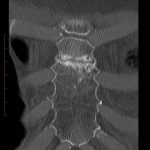Most people think of the chest as a solid mass, but in fact it is made up of several bones that come together at the sternum. This bone is located in the center of the chest and has the role of protecting the heart and lungs.
Le sternum can be injured or fractured in many ways, causing pain and other symptoms.
One of the most common causes of a sternum depressed (or depressed) is trauma, such as a car accident or a fall. This type of injury can lead to a fracture or crack in the bone.
In some cases, the sternum can be pushed inward, a so-called “flail chest” This can even go so far as to cause severe heart damage in some cases. This article will detail the causes and discuss everything you need to know about this condition.
What is pectus excavatum ?
It is a congenital deformity of the rib cage. This pathology consists of an apparent deepening of the distal area of the sternum. If this pathology is not treated, it can lead to compression (pressure) of the lungs and heart.
Symptoms of pectus excavatum
The common symptoms of this pathology are:
- Difficultyto breathe
- Chest pain
- Decreased exercise endurance
What are the causes of pectus excavatum ?
Researchers believe that the pectus excavatum is caused by irregular growth of the connective tissue (cartilage) that connects the ribs to the sternum. This irregular growth leads to a retraction of the sternum towards the inside.
sternum sunken: Is this a very common condition?
This condition is much more common than you might think. In fact, it is estimated that approximately one in 300/400 infants (especially boys) are affected by pectus excavatum.
Fortunately, not all of them require treatment because they have such mild forms that it is not necessary to intervene. In contrast, pectus carenata is less common and affects around one in 2 children.
sternum depressed: Can we avoid it?
Unfortunately, the pectus excavatum cannot be avoided, but it can be treated.
Treatments for pectus excavatum
If you pectus excavatum causes heart and lung problems, doctors may recommend surgery. The goals are to improve breathing, patient function, and cardiac posture. There are several surgical procedures:
The Nuss procedure: it is a very minimally invasive technique. A small incision is made to insert a camera and allow the surgeon to see inside the chest.
Then, through two more incisions, on either side of the chest, a curved steel bar is inserted into the lower part of the sternum, in order to reverse the dimpling. The bar is not visible from the outside and is kept for two to three years before being removed.
The Ravitch procedure: an incision is made in the central area of the chest to remove the cartilage. Then stainless steel splints are placed to support the sternum and connect to the corresponding ribs. They will be surgically removed at a later stage.
It is possible to treat the pectus excavatum without surgery by means of air bell therapy. The problem is that it is a very uncomfortable procedure that requires a lot of persistence and years of implementation before it can improve.
However, in very consistent and strong-willed patients, this therapy may work.
sternum down: dispelling false myths
Many misconceptions circulate about this disease. It is thought, for example, that it may disappear spontaneously as the child grows, but in fact, over the years, the depression of the anterior chest wall worsens.
So much so that in the most extreme cases, the chest may compress the heart (assessable by chest x-ray or cardiac x-ray), or the heart may be displaced to the left relative to the sternum, taking up space in the lung (assessable by spirometry with a restrictive table).
Another false belief is that patients have no symptoms and only show psychological discomfort: in more than two thirds of patients with pectus excavatum, the symptoms are present, although in some cases they do not occur in childhood but in adolescence or adulthood.
What problems can this condition cause if not treated properly?
The psychological impact of a sunken torso on young people, especially for aesthetic reasons, is very important: they avoid team sports so as not to shower with others, they avoid going to the beach or they go there, they keep their shirt on.
This is the main reason why they come to us, but in reality there are also other, more hidden complaints, such as:
- Respiratory fatigue: especially when practicing a sport, but also when climbing stairs, patients get tired very early;
- Pain or tightness in the chest;
- Cardiological symptoms (rarer), such as tachycardia or syncope.
These symptoms are progressive, that is, they occur rarely in children, but become more frequent as the patient grows older.
People who present with a severe form of sunken chest may manifest these symptoms even in their twenties, when the prospects for treatment are then exclusively surgical.
It is now established by many scientific works that the heart in the case of a excavated breast Severe is compressed and fills less: this translates into a decrease in oxygen for the muscles during physical activity, which is why children frequently have limitations during sport.
sternum sunken: why is it often underestimated?
This problem is very often underestimated. It is very common for family doctors or certain specialists who are not experts in this type of pathology to minimize the problem or to suggest various physical activities, telling themselves that the situation will improve with age.
However, the opposite is true, i.e. the depth of the excavated breast worsens with growth.
It is important to consult a specialist in chest malformations in time, since there are a number of non-surgical (totally conservative) treatments that can only be implemented up to a certain age, that is, when the thorax is elastic enough to be corrected.
After the age of 15, the chest will be more rigid because the cartilage has turned into bone, which is an obstacle to conservative treatment, which will no longer be effective.
With regard to surgical therapy, minimally invasive methods have existed for many years in an attempt to minimize postoperative pain, the size of the incisions made, the postoperative hospital stay and the consequences on the lives of these children.
The surgical intervention, if carried out in a center with great experience, guarantees an excellent result in many cases: on the one hand, an adequate space is created for the heart, which will no longer be deformed by the sternum, and on the other hand, a very satisfactory aesthetic result for the boy will be obtained so that he can get rid of the discomfort caused by a malformed torso.





